Ephraim Asili continues his tradition of shooting on film with 'The Inheritance'
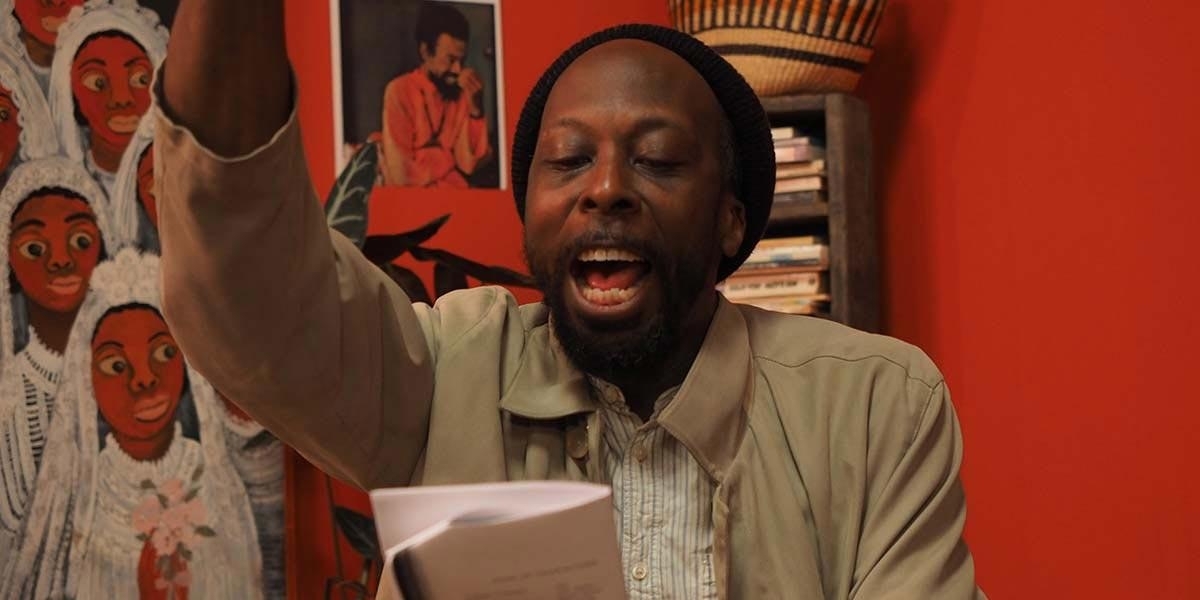
A source of cinematic inspiration was "La Chinoise" (1967) by Jean-Luc Godard which revolves are a group of student activists within a classroom setting. Photo: Mick Bello / EMPAC at Rensselaer
The pathway of becoming a full-time artist-in-residence and assistant professor of film and electronic arts at Bard College almost did not happen for Ephraim Asili. “I went to film school in my mid 20s and it was literally that summer [of 2005] they pulled all of the film stuff out and put in video equipment. The technology was so volatile, troublesome, and didn’t look great that I actually stopped shooting video and became interested in making object art out of sewing. Eventually, somebody approached me and said, ‘You’re suppose to be studying film here. Have you ever tried messing around with a Bolex film camera because it seems like you are interested in a more tactile material approach to art.’ At first, I laughed because I knew the expense of shooting film and in my mind, it was hard to do. I decided to try it out and immediately fell in love with the tactility of film, the weight of the camera, the precision of it and the clarity of understanding what is happening when I’m opening and closing the iris.”
For over a decade,16mm film has been the medium of choice for Asili when making his short films Forged Way (2010), About Being Living (2010), Kinda/One Family (2016), and Fluid Frontiers (2017) as well for his feature directorial debut The Inheritance (2020) which had a World Premiere at the 45th Toronto International Film Festival. “It was interesting working with the crew at EMPAC that had never shot on film. I had certain fine details I wanted in terms of gels that seemingly to the crew were not going to show up anyway. We would do these big light setups and I’d plop my few lights down to get these certain effects because I knew what they would look like on film. Video cameras do wonderful things these days; however, I have yet to see any video that has the ability to get a certain softness to an image without looking wrong or incorrect. Film has a latitude that allows you to play with focus, exposure, and color saturation.”
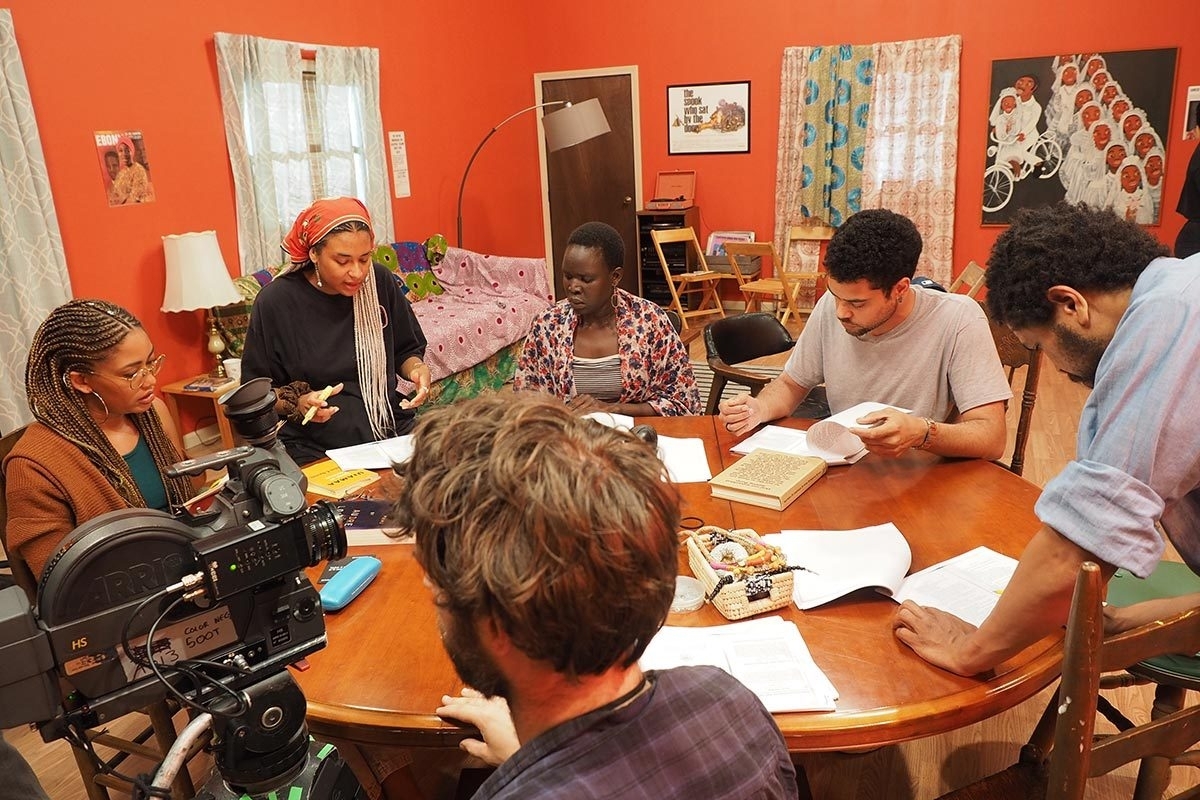
Ephraim Asili goes through an onset table read of the script with the cast. Photo: Mick Bello / EMPAC at Rensselaer.
The Inheritance revolves around the protagonist inheriting a house in West Philadelphia from his grandmother and converts it into a gathering place for activists of color. Asili describes the film as a “speculative re-enactment” as it combines the history of the MOVE liberation group, the Black Arts Movement, and his own experience of being a member of a Black Marxist collective. “All re-enactments are speculative. Often times in the biopics that people revere, they’re attempting to get into the spirit of that individual, and that goes to the set design and every other aspect. That genre of biopic is a type of speculative re-enactment but has often been marketed as something else. What I’m doing is taking real life situations that I lived and reconfiguring them. It’s also a way of saying that I’m trying to tell the truth and lie at the same time. What if I did this in that scenario? That’s the speculative thing. I’m always pushing back against the idea that I’m doing anything other than trying to tell a good story.”
Originally, Asili wrote a conventional 90-minute screenplay to be shot in Philadelphia which had to be reconfigured for budgetary reasons. “I was offered a residency at EMPAC in Troy, New York where I eventually shot the film. The residency was for me to first go to Philadelphia for a few months and write, then come back to EMPAC that winter and hire a team of actors and workshop my script with them. A personal tragedy struck in that in between interval so I had never finished the script. I had scenarios, scraps of dialogue, the whole story fleshed out, and these actors I had handpicked. We went out to Troy and after about 10 days I had probably 80 to 90 pages of new content which we condensed into a live performance that was about an hour long. I shot the meeting sequence that happens in the middle of the film when they are having a big house meeting. This meant that I had the center of the story which I could build to the end and backtrack to the beginning. More importantly, I spent 10 days with the cast getting to know how they speak, their sense of humour, nuances, and the things about them as people that might rub each other the wrong way or love about each other [which were then incorporated into their characters]. Eric Lockley, who I cast as the male protagonist, uses a lot of humour in his own acting and that was something where I said, ‘I should rewrite his character to play with that.’”
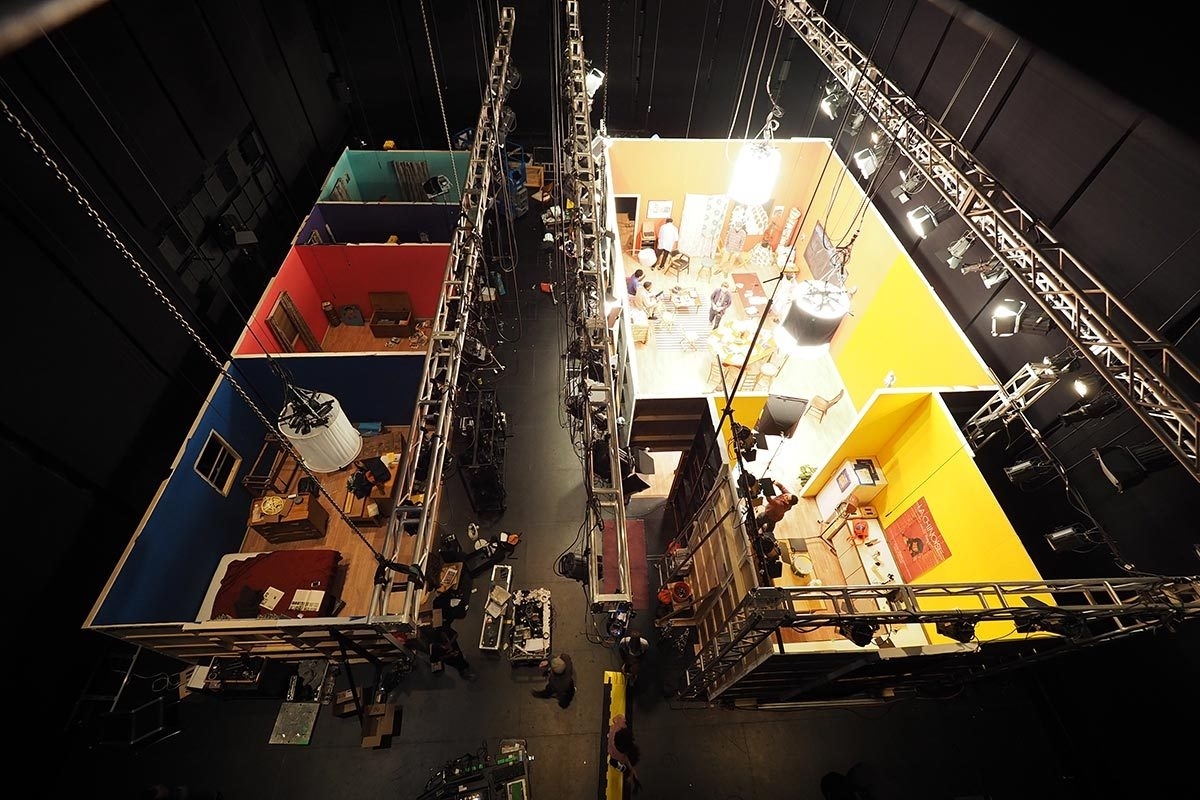
The set was completed the night before principal photography was scheduled to commence. Photo: Mick Bello / EMPAC at Rensselaer.
Asili is a one-man production crew who does everything except building sets. “For me, the first thing with that is being honest with myself about strengths and weaknesses because inevitably when you’re shifting around there are going to be many blind spots but some things, I’m more likely to catch than others. As I got more comfortable it became a situation of, ‘Now that everyone knows what I want, what can I then delegate?’ On day one for instance everything that needed to be done related to film, I did. By the third day I had taught my camera assistant how to load. Eventually, I was able to bring in Ryan Jenkins who works at EMPAC as one of their video technicians [as a cinematographer]. Another big part of it for me, that is stressful but helps, is shooting on film. I’m not in a position to do more than two takes so I have to know exactly what I’m shooting prior to doing it. Shot listing is a process I keep organized in my head as best I can which is frustrating for people; however, works for me.”
Breaking with tradition, the trusty Bolex camera was replaced with an Arriflex SR II High Speed with a PT Super 16 conversion and the footage was captured on KODAK VISION3 500T Color Negative Film 7219. “I shot all of the interiors on 500T, single perf and Super 16 because I wanted a wide look,” explains Asili. “My films are so much about material culture in terms of objects, books, and records. You get a sense of the density and feel of objects in film in a way that doesn’t in video.” A single lens was utilized for each scene. “I used a set of Optar lenses. The earlier scenes in the film were shot generally below 25mm and I would occasionally use 35mm and 25mm. In general, I tried to shoot wide because often there was information in the background that I wanted in focus. I also rented a zoom lens which I wanted to use for two scenes. It was a question of how do you shoot a whole film in a house? For me, that was mostly a matter of changing the photography every single scene so to have another way of looking at the space.”
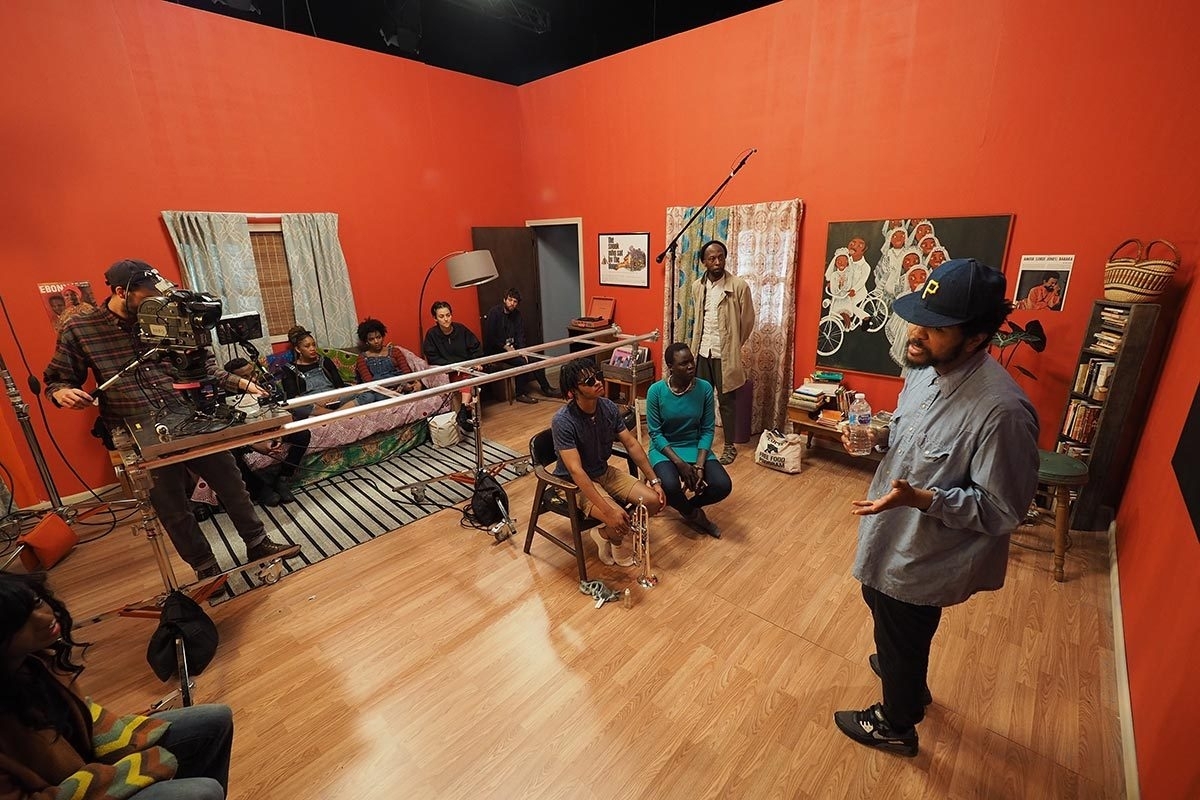
The film camera of choice for the production was the Arriflex SR II High Speed with a PT Super 16 conversion. Photo: Mick Bello / EMPAC at Rensselaer.
Principal photography consisted of five, eight hours days. “I was shooting at a rapid pace with a lot of restrictions. The photography had to be shot A, B, C and that’s it. I found it easier to do the blocking the night before, and wakeup fresh and do it. I had notations for everyone the day of. The set wasn’t completed until the night before I started shooting on it. The venue was limited in terms of space and budget. We would often have to flip the set. One room for half of the shoot was a living room before being turned into the bedroom. We were shooting out of sequence which made any sort of meticulous perfectionist approach impossible. But the photography part for me is one of my strengths. I had a sense of the style; it was just a matter of getting into the space and blocking.” A source of inspiration was La Chinoise (1967) by Jean-Luc Godard as well as the art of Emory Douglas from the Black Panthers.
Archival footage figures prominently in the narrative. “Being a friend of the MOVE organization, I was able to see things that the archive didn’t necessarily know that they had. There is a shot in a film where a woman is wearing a Shirley Chisholm sweatshirt, it pans out and cuts to her. About a month after the shoot I was away on an artist residency in Rochester, New York, and I had that picture of Shirley Chisholm on my wall. The archivist of the Visual Studies Workshop walks by and says to me, ‘Just last week someone dropped off a box of video tapes from the 1970s.’ It was an independent left leaning media group and they covered Shirley Chisholm’s run for presidency in 1972 when she made a stop in Rochester. Had I not been on the residency doing something totally different I would have never come across that footage, and it wasn’t in my script that it would happen there. It was one of those things that fell into my lap.”
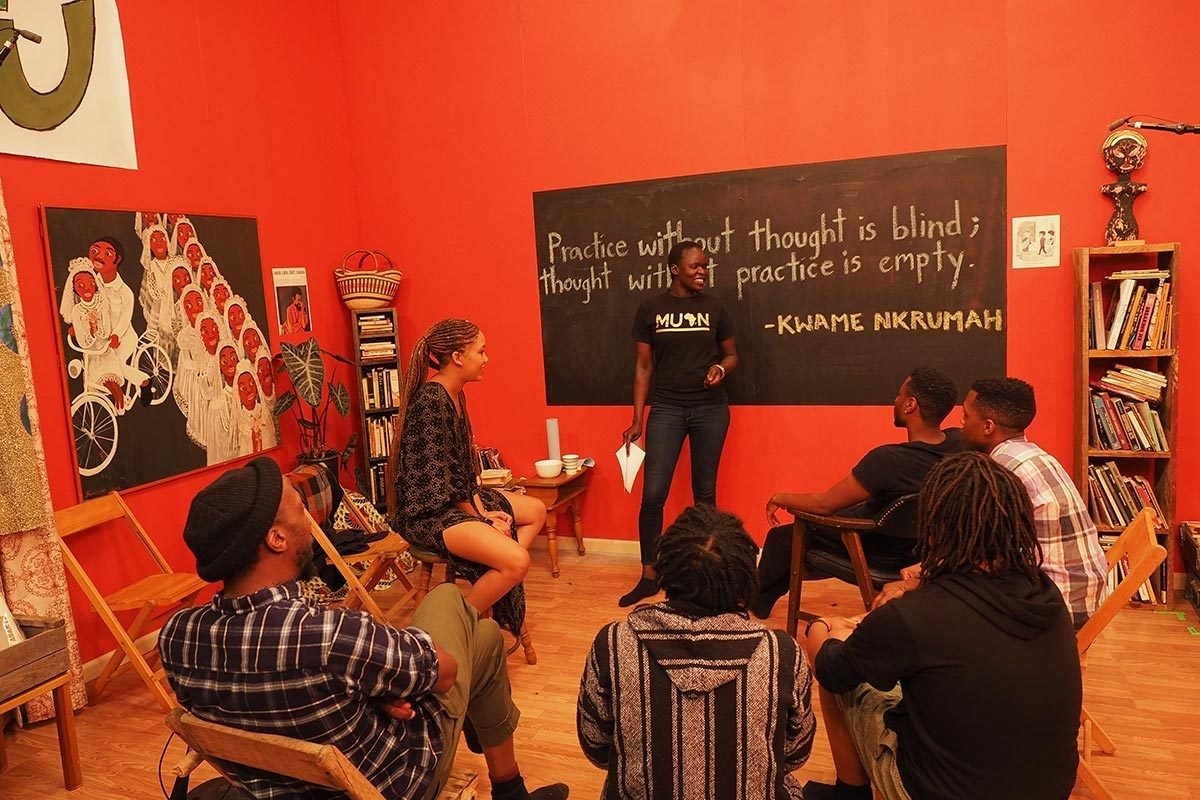
Various relevant quotes made their way onto the blackboard courtesy of the cast and crew. Photo: Mick Bello / EMPAC at Rensselaer.
“The story takes place from spring to summer,” explains Asili. “I picked a few different weekends, would go and wait for the weather to get where I wanted it, and shot all of the cutaways of the exteriors. Then at the end of the process I wanted more imagery for the montage sequences of photographs and objects. I went back to the studio to shoot even more cutaways. Overall, there are three different shoots. I was able to do a lot of that because I had bought my own equipment and do all of my own stuff.” The biggest challenge was having the budget for the required materials. “We only had enough stock to do each scene with one take maybe two.” Picking a favorite scene is tough. “I would have to stick with the meeting scene in the middle of the film where they are trying to decide about having this big party. I don’t think that scene has the most impressive cinematography but has all of the elements of the film interwoven in a way that exemplifies everything else. It’s hard for me. The sum is so much greater than the parts.”